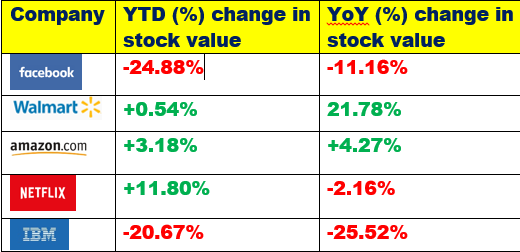CONTENTS
1. YTD Meaning
2. Different uses of ‘year to date’
2.1 ‘year to date’ On Employee Paystub
2.2 ‘year to date’ and Companies
2.3 ‘year to date’ and Investors
3. YTD V/S YoY
4. YTD Meaning for onlinepaystubgenerator.com
YTD Meaning
The term ‘year to date’ (YTD) is self-explanatory. It refers to the period between the first day of the current calendar/fiscal year and the current date.
For example:
If we consider the current date as 5 th April,2020 then the period, 1 st Jan 2020 to 5 th April 2020 is referred to as ‘year to date’ (for the calendar year).

Now let us suppose that the fiscal year starts on 1st April, 2020 then the period, 1st April 2020 to 5th April 2020 is referred to as ‘year to date’ (for the fiscal year).
Note- Fiscal year may or may not start on 1st Jan. It varies with different countries and companies.
Different uses of ‘year to date’
YTD comparisons are useful for employees, companies, and investors.
The following are the YTD meanings for different individuals:
‘year to date’ On Employee Paystub
‘YTD’ appears a lot of times on an employee’s paystub. You can see YTD earnings, YTD wages, YTD gross, YTD Hours, etc.
The following are the basic definitions of different ‘Year to Date’ terms that appear on the paystub:
This number refers to all earnings including bonuses and commissions from day 1 of the year till the current date.
It refers to all wages paid either from salary or hourly pay from day 1 of the year till the current date. Bonuses and commissions are usually not included.
The number of hours worked from day 1 of the year until the last day of the pay period.
All the taxes that are paid up to the end of that paystub’s period like, Federal, State, Social Security, and Medicare taxes.
It refers to all the contributions to a health savings account (HSA) or 401(k) from your employer till the day of the pay.
year to date’ and Companies
YTD revenue of a company helps the owners to monitor the growth of the company since the beginning of the current year.
For example, let us suppose the following table shows the total revenue generated by company ABC:
| Time |
Revenue ($) |
| For whole Fiscal year 2019 |
1,000,000 |
| Jan’ 2020 |
120,000 |
| Feb’ 2020 |
240,000 |
| March’ 2020 |
190,000 |
| April’ 2020 |
250,000 |
To calculate the year to date revenue as on 30th Apr’2020, we add up the revenue of Jan, Feb, Mar & Apr, that is, 120,000+240,000+190,000+250,000 = 800,000$.
So, we can say that YTD revenue is 800,000$.
We can also calculate the YTD returns as follows:
YTD Return(%)=(YTD Revenue)/(Revenue at the end of previous fiscal year)×100
For the above case, YTD return (%) = (800,000/1,000,000) × 100 = 80%.
This means that company ABC is doing well since it has acquired 80% of its previous year’s revenue by the end of April.
Related article: Times Interest Earned Ratio (TIE RATIO)
‘year to date’ and Investors
Investors have a close look at the YTD performance of a company. They check how well it is doing with respect to its previous year’s performance.
If a company’s YTD performance is poor with respect to the previous year, then it is a ‘Red Flag’ for the investors and they may not do further investments in the company.
YTD V/S YoY
Although understanding YTD meaning serves a key role in financial modeling and reporting, there is another replacement for YTD. It is ‘YoY’.
The YoY acronym stands for ‘Year over Year’. It compares a period of the current fiscal year with the same period of previous fiscal years.
This serves as a better tracking parameter when it comes to investment portfolios as increasing value and return is measured with respect to previous years.
The following are the ‘Year over Year’ V/S ‘Year to Date’ performance of some famous stocks as on 3rd April 2020:

Note: The performance of most of the stocks are poor due to the COVID-19 pandemic at that time.
YTD Meaning for onlinepaystubgenerator.com
If you are still confused regarding year to date (YTD) while generating your paystub, you don’t need to worry!
Just click on ‘Auto’ from the pull-down menu and our online paystub generator will automatically calculate the YTD for you.
Create your stub now
